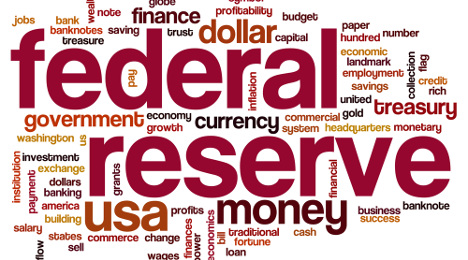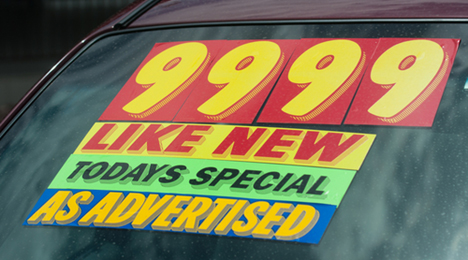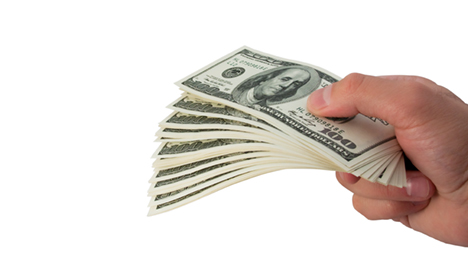Along with an analysis about how ongoing macroeconomic trends are pointing toward positive fortunes for dealerships, the team at KeyBanc Capital Markets attributed an upbeat conversation with Cox Automotive chief economist Tom Webb coupled with the July findings of its monthly dealer survey for producing such a “bullish” outlook.
Before delving into the takeaways from the chat with Webb, 60 percent of dealers surveyed told KeyBanc they posted a year-over-year used-vehicle sales increase in July. And 40 percent of the participants indicated that climb was more than 10 percent.
KeyBanc reported dealers generated those increases “despite the near-term headwind of grounded inventory under recall, and growth should accelerate as recalled parts are expected to come into service departments in the back half of the year.”
Furthermore, financing to turn used metal is on sure footing, too, as all of KeyBanc’s July dealer survey participants mentioned intact or increasing subprime and overall auto financing availability.
Those upbeat survey findings arrived in tandem with KeyBanc’s one-hour teleconference with Webb where analysts and the wholesale expert who is coming back again to the National Remarketing Conference at Used Car Week discussed used-vehicle pricing and demand in detail.
Webb reiterated many points he’s mentioned in previous reports from Auto Remarketing, stating that used-vehicle pricing is strong even as the supply of off-lease vehicles has been growing at 20 percent for the past couple of years, which reflects strong consumer demand.
“He believes, and we share this view, that used vehicle pricing outlook remains solid even as the off-lease volume continues to come in at about 16 percent annual growth through 2018,” KeyBanc analysts said.
“Better equipped, safer cars cost more when new and therefore they cost more when used,” they continued. “Increasing supply is a headwind, but Tom believes in this environment of strong demand and financing availability, it is an immaterial headwind, perhaps a 2-percent decline in prices, which is insignificant to demand or profitability."
Both Webb and KeyBanc noted increasing off-lease supply is good for both the new and used sales outlook.
“It supports new vehicle demand as a majority of lessees (about 80 percent to 85 percent) who turn in expired leases will leave the lot with a new vehicle lease,” KeyBanc said. “It supports used vehicle demand as it improves inventory availability.”
Additionally, KeyBanc published a new analysis of historical U.S. GDP growth, unemployment and U.S. light vehicle seasonally adjusted annual rate (SAAR). The firm noted that its analysis confirmed positive outlook for vehicle demand and dealers based on belief that:
—There is an apparent disconnect between auto stocks and the S&P 500 as, year-to-date, the S&P 500 reflects a positive investor sentiment on the U.S. economic outlook, but the same is not being reflected in the auto stocks.
—The U.S. economic forecast remains positive, in the 1 percent to 2 percent compound annual growth rate range in 2016 and 2017, and is expected to accelerate from weaker first-half growth, largely driven by consumer spending and the high-single-digit growth outlook in the housing market.
—Initial unemployment claims remain on an improving trend and the outlook remains positive, driven by a positive economic growth outlook, as there is a strong reverse correlation between them.
“If good economic outlook equals good labor markets equals good automotive demand, then good economic outlook equals good automotive demand,” analysts said.
Look for used-car sales to finish July near the 3.4 million mark, as forecasts from Edmunds.com and TrueCar each landed in that neighborhood.
Edmunds estimates July’s used-car sales tally at 3.4 million, resulting in a 38.7 million SAAR. Last month, there were 3.2 million used-car sales, with a resulting SAAR of 38.7 million, the company said.
TrueCar projected a possible total of 3,441,581 used sales this month, which would beat year-ago figures by 4 percent.
Citing data from the National Automobile Dealers Association, ADESA chief economist Tom Kontos said in a report earlier this month that franchised dealers lifted June used-car sales by 5.3 percent year-over-year.
Independents were up 9.1 percent, he said.
The latest Beige Book — the Federal Reserve’s ongoing effort to gather anecdotal information on current economic conditions through reports from bank and branch directors and interviews with key business contacts, economists, market experts and other sources — showed pockets of dealership turbulence in several of the 12 districts.
While contacts in Cleveland, Kansas City and Dallas expressed an optimistic outlook for future vehicle sales, most districts noted that auto sales slowed during the reporting period, but remained at fairly high levels.
All but the First District in Boston discussed the auto industry in the latest Beige Book that Fed officials released on Wednesday. Many assessments not only touched on what happened as the second quarter closed but also delved into future expectations, since the Fed won’t offer its next Beige Book until after Labor Day.
Here’s the rundown of auto-industry content shared in the newest Beige Book:
New York
The Fed indicated that new-vehicle sales are reported to have softened somewhat in May and June, though they are still said to be at fairly high levels. Officials mentioned inventories of new vehicles are reported to be mixed, largely reflecting availability of financing incentives on some models but not others.
The report also acknowledged the used-vehicle market remains soft, with both sales activity and prices drifting down in recent months. Officials pointed out that retail and wholesale credit conditions generally remain favorable.
Philadelphia
Overall, Third District dealers told the Fed that vehicle sales slowed further during the current period but remain at high levels.
Officials added that more precise early period reports indicated sales were lower than during the same time last year.
“Anecdotal reports for recent weeks suggest sales will be flat, at best, with last year,” the Fed said. “Dealers are content with the relatively high sales numbers; however, they spoke of ‘managing the plateau’ and of caution against overextending their businesses financially.
Dealers in this district still see growth potential in 2017, according to the Beige Book.
Cleveland
Year-to-date new-vehicle sales through May came in on par with those of a year ago, according to dealers in the Fourth District.
The Fed found that automaker incentives continue to rise and are now reportedly above 10 percent, but average transaction prices are also rising because of the ongoing shift in consumer preferences from cars to light trucks (including SUVs).
“New-vehicle unit volume is expected to remain at high levels this year, though dealers anticipate retail transactions to decline and fleet sales to rise,” officials said.
And now some good news for the used departments at dealerships in the district:
“Consumers are seeing increasing value in the purchase of used cars,” officials said. “The large number of leased vehicles being turned in is putting downward pressure on their resale prices. Year-to-date sales of used vehicles rose almost 5 percent compared to those of a year ago.”
The Fed added that dealer payrolls increased along seasonal trends.
Richmond
The Fed found that vehicle sales varied by location.
“A dealership in western Virginia reported that a recent increase in their digital footprint has helped push up foot traffic and sales, and an executive at a dealership just outside of Washington, D.C. said that sales have been stronger since our previous report,” officials said.
“Dealerships in central North Carolina and the Hampton Roads region of Virginia reported that sales remained steady at previous levels,” they continued. “Sales of heavy trucks declined, according to a dealer who also noted that higher prices caused by changes in engine emissions requirements in the next model year could weaken future sales.”
Atlanta
Heading deeper into the South, dealers reported some slowing in the pace of sales in May.
“Merchants expect sales to remain relatively flat over the next few months,” the Fed said.
Chicago
Purchases of new and used vehicles continued to be “robust, and leasing activity remained “strong,” according to the Beige Book recap of the Seventh District.
Officials noticed average vehicle transaction prices again moved higher as the mix of sales continued to shift toward larger, more expensive vehicles and because of greater demand for high-tech options.
St. Louis
Dealers in eastern Arkansas reported that sales continue to be favorable compared with 2015.
“Multiple dealers noted that they expect an increase in year-over-year sales in the third quarter,” the Fed said.
Minneapolis
As energy prices soften, dealers in the Ninth District are seeing the impact.
“Sales of new vehicles at a dealership in Rapid City, S.D., were off by 50 percent and used-vehicle sales were off by 30 percent since January due to layoffs in Wyoming coal mines and oil fields in North Dakota,” officials said.
Kansas City
The Beige Book indicated sales were flat and remained below year-ago levels.
“But dealer contacts expected a moderate pick-up in the coming months,” the Fed said. “Auto inventories decreased and were expected to fall further.”
Dallas
The Fed found that sales in this district held steady and were in line with year-ago levels.
“Sales are projected to be strong in 2016, but contacts expressed concern about the potential negative impact of the election on consumer confidence,” officials said.
San Francisco
And finally out West, officials recapped that vehicle sales eased somewhat, “and contacts noted that some dealers were selling new vehicles at a loss to meet sales quotas set by manufacturers.”
Look for June to be a strong month for the retail used-car market.
According to TrueCar, there may be more than 3.24 million used-vehicle sales this month, which would beat June 2015 figures by 5.5 percent.
Those numbers in TrueCar’s forecast include franchised and independent dealers and sales between private parties.
In the first five months of the year, franchised dealers sold approximately 5.3 million used vehicles and independents moved nearly 5 million used units, according to NADA figures cited by ADESA chief economist Tom Kontos.
During an AIADA webinar on Tuesday, Kontos said each of those figures represents a year-over-year percentage increase in the low- to mid-single digits.
“So, that’s healthy,” Kontos said.
He brought up what’s called Say’s law, in that supply of something can generate demand. It wasn’t applied to the used-car business, he said, but it makes sense here.
“Basically, the supply of used cars is generating used-car sales simply because the availability is recovering, so people have more choices out there,” Kontos said. “And the tendency now will be for dealers, I think, to be more aggressive with their pricing because they’re able to get the cars a little bit cheaper at auction, as the supply grows.
“They have a little more selection, so they can optimize their purchases to be right for their market, and then consumers get a little bit of a (benefit) there too from a little bit more ability to negotiate on price,” he said.
With 10 of the 12 Federal Reserve districts discussing new- and used-vehicle sales activity, the latest Beige Book highlighted that metal rolling over the curb generally was steady in April and May. On Wednesday, the Fed reported through its district-by-district rundown that looking at overall sales, truck and large vehicle turns outpaced car sales across many districts.
The Cleveland district was one of the shining stars from the latest reporting period as sales grew 1 percent over a year ago, with light trucks and SUVs dominating purchases. Truck purchases were strong in the Richmond district, too.
Still, pockets of the country suffered some sales softening, especially the Philadelphia, Atlanta and Kansas City districts.
Looking long term, Fed dealer contacts in the Philadelphia, St. Louis and Dallas districts reported an optimistic outlook for annual auto sales in 2016, due mostly to low gas prices.
Here are additional particulars from the 10 Federal Reserve districts that mentioned sales in more detail as a part of the latest Beige Book:
New York
The Fed noted that new-vehicle sales in upstate New York are reported to be steady at a fairly high level in April, though there were scattered signs of softening in early May.
“Inventories of new vehicles are reported to be somewhat on the high side for this time of year,” officials reported.
Meanwhile, the Fed determined sales of used vehicles were also described as steady in April with some signs of a pickup in May.
“While credit conditions generally remain in good shape, one contact notes some tightening at the low end,” the Beige Book said.
Philadelphia
Overall, Third District dealers reported that light vehicle sales have slowed somewhat during the current period.
“Some dealers suggested that early May sales appeared to be coming back,” the Fed said. “Others expressed concerns that sales have begun to slow from recent peaks.
“Dealers mentioned that lack of inventory, aggravated by high recall levels, has constrained supply,” the report continued.
The Beige Book also mentioned that “record” numbers of off-lease vehicles coming back to the used-vehicle market has lowered demand for new-car sales.
“Dealers hope that total 2016 sales may still eclipse 2015, in part, due to greater use of manufacturers' incentives,” the Fed said.
Cleveland
As mentioned previously, the Fed found that year-to-date sales through April of new vehicles rose 1 percent district-wide compared to those of a year ago. Purchases of light trucks and SUVs continue to dominate the market.
For luxury brands, the report indicated weakening demand that began early in 2016 continued into April.
“Although new-vehicle sales are expected to remain stable at high levels this year, dealers reported that fleet sales are rising, while retail transactions have flat lined or declined,” officials said.
“Transaction prices were stable during the past couple of months, and leasing remains very popular. Dealer payrolls increased along seasonal trends,” they added.
Richmond
The Beige Book said vehicle sales remained fairly strong but have started to slow, according to dealers and an industry expert, while motorcycle sales were sluggish.
Officials added that retail prices rose slightly faster, although increases were moderate overall.
Atlanta
Dealers told the Fed that sales of light trucks and larger vehicles had softened slightly from previously high levels.
“The outlook among district merchants remains generally optimistic,” the Fed said.
Chicago
The Fed found that sales of new and used vehicles remained “robust” and “strengthened further” in recent weeks, helped by “more generous” incentives.
Dealers also noted that leasing activity was especially strong. The Fed added that average overall transaction prices moved higher as the vehicle mix continued to shift toward larger, more expensive vehicles, and because of greater demand for high-tech options.
St. Louis
The Fed shared that reports from dealers were mainly positive. Most dealers noted sales were in line with 2015 levels, and several Memphis used-vehicle dealers reported record sales for the month.
Multiple dealers also noted a shift in demand toward more high-end vehicles.
“Contacts continued to report the beneficial impact of low gasoline prices and low interest rates,” the Fed said.
Minneapolis
The Fed highlighted that a dealership in central South Dakota reported that sales over the last quarter were up 60 percent since this time last year while its used-vehicle sales have nearly doubled.
Kansas City
Officials found that vehicle sales continued to decline at a “moderate” pace and remained below year-ago levels, although dealer contacts expected a “modest” pickup in sales for the months ahead.
The Fed also noted that vehicle inventories decreased but were expected to rise slightly in coming months.
Dallas
The Beige Book indicated sales held fairly steady at “very high” levels and were up slightly from year-ago levels.
“However, a few contacts noted that the contraction in the energy sector was affecting sales,” the Fed said.
Officials added that trucks and SUVs were outselling cars. Inventories were generally at desired levels, although one dealer mentioned they were a little short on trucks.
“Contacts expect good sales volumes in the upcoming quarter but for margins to remain under pressure,” the Fed said. “The outlook is for strong sales in 2016, down very slightly from record highs reached in 2015.”
TechnoMetrica Market Intelligence didn’t have upbeat news for either dealerships or finance companies looking to turn new metal coming out of the holiday weekend.
The firm’s Auto Demand Index (ADI) — which measures the intent of consumers to buy or lease a new vehicle within the next six months — registered a sharp decline in May, falling 15 points from the previous month to a score of 91. This drop marks the second straight month for an index decline.
Meanwhile, the ADI’s three-month moving average also fell for the second month in a row, indicating what TechnoMetrica believes is a continued deceleration in momentum for vehicle purchase intent among U.S. consumers.
In addition, the share of Americans who plan to purchase or lease a new vehicle within the next six months declined three points from April to 15 percent.
TechnoMetrica president Raghavan Mayur explained the ADI is conducted monthly and is based on the response to a key question posed to more than 900 adult Americans: How likely is it that you will buy or lease a new vehicle within the next six months?
The firm pointed out the weakening in purchase intent is further demonstrated as analysts measured the index against the long- and short-term tracking rates.
May’s ADI score of 91 is 10 points below the 12-month moving average of 101 and trails the six-month moving average of 105 by 14 points. Thus, analysts at TechnoMetrica anticipate that new-vehicle sales will decrease “significantly” in the coming months.
TechnoMetrica contends a number of factors are contributing to the decline in the share of Americans who plan to acquire a new vehicle in the near future.
For instance in April, the cost of living in America rose at its highest rate in three years, according to a recent report from the Labor Department. As the price of gasoline continues to move higher, climbing 8.1 percent in April, and the cost of rent and medical care grows, consumers seem to be exercising caution in their spending habits. As a result, at least for the short term, TechnoMetrica thinks Americans are less likely to purchase higher priced items, such as automobiles.
In addition, as consumers observe the slow growth in the U.S. economy, the firm indicated there is increased concern among Americans over the future state of the overall economy.
TechnoMetrica also mentioned the ongoing presidential campaign season is also having an influence on Americans’ spending plans. The prospect of electing a new president tends to create a sense of unease and uncertainty among consumers, who may be concerned about the impact a new president’s policies could potentially have on the national economy.
“With the economy growing at a slow rate, the stock market still under pressure, and gas prices continuing to climb at a steady pace, there is a rising concern among consumers regarding the future outlook of the American economy,” Mayur said. “These anxieties are encouraging consumers to reassess their purchasing plans, especially regarding more expensive goods and services. Thus, we expect that new vehicle sales will decelerate over the coming months.”
Along with gaining insight into consumers’ vehicle purchasing plans through the Auto Demand Index, TechnoMetrica also measures consumer confidence regarding economic conditions in the country by producing the monthly Investor’s Business Daily/TIPP Economic Optimism Index.
In May, that index gained 2.4 points, or 5.2 percent, from the previous month, registering a reading of 48.7. However, Americans continue to be divided regarding the state of the overall economy, as half of consumers assert that the U.S. economy has not been improving, while 47 percent say that it is improving.
The Auto Demand Index survey also delves into various other aspects of consumers’ vehicle shopping plans, such as which brands prospective buyers are most likely to acquire.
In May, Ford maintained its position as the most preferred brand among consumers who are planning to acquire a new vehicle, with a share of 15 percent. Chevrolet, chosen by 13 percent of likely buyers, moved into second place in May, overtaking Toyota, which captured a 12 percent share of consumers. Meanwhile, nearly one in 10 prospective buyers (9 percent) are likely to acquire a Honda for their next vehicle purchase, a decline of two points from the previous month.
Regarding the types of vehicles consumers prefer, mid-size vehicles remain the most popular selection among likely buyers, as just over one in five respondents (21 percent) chose this vehicle type, a decline of two points from April.
Small SUVs were named by 16 percent of likely buyers as their preferred vehicle type, a rate unchanged from last month. Similar shares of consumers (13 percent) identified compact and full-size vehicles as the types they would most likely purchase as their next vehicle. Rounding out the top five, pickup trucks were chosen by 12 percent of likely buyers, a gain of one point from last month.
In terms of demographics, parents, male adult drivers, and Americans ages 25 to 44 showed the greatest increase in purchase intent in May.
In each of the three segments, the ADI levels grew by six percentage points, to 151, 111 and 121, respectively. The most significant drop in purchase intent was shown among Americans residing in the Northeast, who displayed a 19-point decline from April, along with drivers age 18 to 24, whose ADI score decreased by 17 points.
Respondents living in suburban areas and those 65 and older also reported sharp declines in intention to acquire a new vehicle.
Each month, TechnoMetrica uses Random Digit Dial telephone methodology to conduct live interviews with more than 900 respondents, using both landlines and cell phones. The margin of error for the survey is +/- 3.2 percentage points.
In addition, recent statistical analysis has shown a strong correlation between the Auto Demand Index and actual U.S. vehicle sales. The correlation is 0.76.
With fewer weekends to move metal, most used- and new-vehicle sales projections from TrueCar, Edmunds.com and Kelley Blue Book consisted of varying degrees of softening against year-ago results.
However, TrueCar’s used-vehicle sales projection for May was a bit upbeat as analysts expect this month’s total sales — including franchised and independent dealership turns as well as private-party transactions — to reach 3,181,877 units. Should the industry hit that mark, the result would represent a 2-percent gain versus May of last year.
Meanwhile, the team at Edmunds.com thinks used-vehicle sales will reach a slightly higher figure — an estimated 3.2 million units for a seasonally adjusted annual rate of 38.5 million. That projected SAAR is the same as a year ago, but Edmunds.com indicated last May’s sales figure came in at 3.4 million so the unit sales forecast is slightly lower.
In its May projection, the Kelley Blue Book team mentioned a prediction that could be noteworthy to used-car managers. KBB suspects that General Motors could be sustain a notable new-model sales decline because of its rental reduction strategy.
“General Motors is expected to report one of the largest sales declines of all major manufacturers in May 2016,” Kelley Blue Book analyst Tim Fleming said.
“GM has been outspoken about its rental reduction strategy, which accounts for much of the drop in volume and will impact sales totals on the company's high rental units like the Chevrolet Cruze, Impala and Equinox,” Fleming continued. “GM is keeping the end-game in mind here. By reducing the volume of GM vehicles in rental fleets, the company will eventually see strengthened residual values.”
No matter what automakers and dealers might do to move used or new metal before the end of May, they’re all facing the situation of one less weekend — a factor multiple analysts noted as likely to impact sales results.
Kelley Blue Book said new-vehicle sales are expected to decrease 6 percent year-over-year to a total of 1.53 million units in May, resulting in an estimated 17.4 million SAAR.
“This month’s sales results are set to fall year-over-year with two fewer selling days combined with retail demand that is holding steady, but not growing,” Fleming said. “While this year may not bring the growth the industry has become accustomed to, it is important to remember that sales are still at record levels and economic factors point to continued strength in the near future.”
Over at TrueCar, analysts touched on how the calendar fell this month, too, putting its projection for total new vehicle sales, including fleet deliveries, at 1,569,538 units in May. That figure would mark a drop of 4 percent from a year ago, restrained by one less weekend compared with the same month in 2015.
“Memorial Day weekend kicks off the summer selling season and we see consistent strength in demand, particularly for crossover utility vehicles and pickups,” said Eric Lyman, TrueCar’s vice president of industry insights. “The industry is up against a tough comparison with May 2015 — with five weekends then versus four this year — but that doesn’t diminish the market’s underlying health.”
And at Edmunds.com, analysts expect that May new-vehicle sales would reach 1,537,436 units for an estimated SAAR of 17.5 million. The site’s projected sales figure would be a 2.3-percent increase from April but a 5.8 percent decrease from May of last year.
While sales appear to be slowing, Edmunds.com says that 2016 is still on track to break last year’s record of 17.47 million new-vehicle sales.
“It’s easy to look at May’s sales and conclude that the retail car market is losing steam, but it’s too soon to say for sure that auto sales are leveling off,” said Edmunds.com director of industry analysis Jessica Caldwell.
“As in previous years, the summer months will flush out more incentives from automakers and the urgency that shoppers show in responding to these incentives will give the industry a much better sense of how the market is trending,” Caldwell continued.
TrueCar reported that incentive spending by automakers averaged an estimated $3,034 per vehicle in May, up 7.1 percent from a year ago, but down 0.4 percent from April.
“Incentives moderated a bit this month while consumers stay focused on higher-margin products,” Lyman said. “Along with this May’s abbreviated selling period, automakers have to adapt to weaker demand for midsize and small cars as relatively cheap gas entices more consumers to upgrade to crossovers and pickups.”
Lyman also mentioned the Federal Open Market Committee left interest rates unchanged last month and overall U.S. economic conditions remain positive. He added that April’s unemployment rate held steady at 5.0 percent, the lowest for the month in eight years, and gasoline prices are still favorable for consumers, falling to a national average of $2.29 per gallon on May 24 from $2.738 a year earlier.
The impact from the upswing in off-lease volume isn’t likely to be nearly as dramatic as some have feared, says a report released Friday by Scotiabank.
And 2016 has started off with strong demand in both the new- and used-car markets.
A summary of the Scotiabank Global Auto Report said there has been a 3-percent lift in new-car sales this year, and used-car demand is up 6 percent year-over-year through March, more or less keeping pace with the growth rates of recent years.
Calling the off-lease volume gains expected to hit the market in coming years “modest by historical standards,” Scotiabank points out that it equates to just a 1-percent hike in total number of used cars for sale each year.
And helping to mitigate the increased supply is strong vehicle affordability, income and demand gains, and low interest rates.
“Despite record profitability for the two largest North American automakers in early 2016, concern about vehicle pricing and the U.S. sales outlook remains high among investors and many analysts. Auto manufacturers and parts suppliers are trading at multiples well below historical averages and at a large discount to the overall S&P500,” Carlos Gomes, senior economist and auto industry specialist at Scotiabank, said in the summary.
The concern is that more off-lease volume has put downward pressure on used-car prices, which could result in softer new-car prices and sales.
“However, we do not see any evidence of this occurring. In fact, demand for both new and used vehicles continues to strengthen in the United States, with average transaction prices for new models climbing to record highs in early 2016,” Gomes said.
More on new-car market
A similar analysis from TechnoMetrica also has a strong outlook for new-car sales, though perhaps not as vibrant as recent years.
Findings from the company’s latest Auto Demand Index survey suggest that thanks to low interest rates and gas prices as well as labor market improvements, new cars will still sell at a nice clip, just a bit slower.
With the monthly ADI survey, more than 900 U.S. adults are asked this question: How likely is it that you will buy or lease a new vehicle within the next six months?
April’s ADI reading was 106, which was a 5-percent decline. The index had climbed for three straight months. That said, last month was the fourth straight reading above 100, leading TechnoMetrica to believe that “purchase intent will maintain its positive trajectory in the coming months.”
The company also pointed out that 18 percent of Americans in April planned to buy a new car within the next six months, which was steady with the March level.
(Explaining how the ADI works, the company said that the “index has been set to an initial value of 100 based on demand levels between February 2007 and April 2007, when annualized sales registered at 16.3 million units.”)
“Consumers are less optimistic regarding the current state of the U.S. economy, due to such factors as the recent volatility in the stock market and growing fears of another recession,” said Raghavan Mayur, president of TechnoMetrica, in a summary of the report.
“However, positive developments surrounding the auto industry, including relatively low gasoline prices, will continue to drive new-vehicle sales upwards, though at a slightly lower rate than what we have been witnessing lately,” Mayur added.
While multiple forecasts have new-vehicle sales gaining significant or perhaps record-setting steam in April, the projection for used-vehicle sales to be generated during the fourth month of 2016 contains a year-over-year decline of nearly 4 percent.
TrueCar indicated that its used-vehicle forecast for total sales — including turns at franchised and independent dealerships as well as private-party transactions — may reach 3,346,766 units, which would be down 3.7 percent from April of last year.
Edmunds.com also is saying that used-vehicle sales will drop this month.
Edmunds indicated that an estimated 3.3 million used vehicles will be sold in April for a seasonally adjusted annualized rate (SAAR) of 38.2 million compared to 3.6 million or a SAAR of 37.1 million used sales in March.
On the new-model side, TrueCar is much more upbeat as analysts pegged their projection for total new-vehicle sales, including fleet deliveries, to reach 1,502,100 units in April. The forecast represents a 3.2-percent rise from a year ago and the highest volume for the month since 2000.
TrueCar went on to share that the month’s SAAR for total light new-vehicle sales is an estimated 17.4 million units for the month versus 16.75 million units a year ago. On a daily selling rate basis, overall sales dipped 0.6 percent given one more day compared with April 2015.
Excluding fleet sales, TrueCar determined U.S. retail deliveries of new cars and light trucks should rise 4 percent to 1,233,900 units on steady consumer demand.
“April is typically a transitional month wedged between higher-volume March and May, but this year dealerships appear to have benefited from an early Easter that fell in March,” said Eric Lyman, TrueCar’s vice president of industry insights. “It’s reassuring when retail sales grow faster than the overall industry pace as it indicates consumers remain very active and engaged in the new vehicle market.”
The analyst team at Kelley Blue Book shared similar sentiments about where April’s new-car sales figure could land
KBB analysts indicated new-vehicle sales are expected to increase 4 percent year-over-year to a total of 1.51 million units in April, resulting in an estimated 17.5 million SAAR. They added that April sales could report the highest April volume ever, surpassing the previous record of 1.5 million units in April 2005.
“Following a disappointing March, we expect sales to get back on track in April with SAAR in the mid-17 million range,” Kelley Blue Book analyst Tim Fleming said. “Increased fleet sales and rising incentive spending among automakers remain the factors to watch, but retail demand appears to be holding steady, signaling the industry’s strong run isn’t over quite yet.”
And like TrueCar and KBB, Edmunds.com also is suspecting that new-vehicle sales could produce records in April.
Edmunds.com forecasted that 1,514,855 new cars and trucks will be sold in the U.S. in April for an estimated SAAR of 17.5 million. Its projected April sales figure would be a 4.8 percent decrease from March but a 4.3-percent increase from April of last year.
Jessica Caldwell who is Edmunds’ director of industry analysis, explained that this month’s sales are poised to eclipse the April record of 1,500,648 new car and truck sales set in 2005, and 2016 is on track to shatter last year’s full-year record of 17.5 million sales.
“Even though Q1 ended with a relatively lackluster March the industry still as strong as ever, and this month’s sales will only reinforce that strength,” Caldwell said. “Considering that April is typically the calm before the storm of summer sales, there’s every reason to believe that 2016 will be a year for the history books.”
Edmunds.com also estimated that retail SAAR will come in at 14.4 million vehicles in April, with fleet transactions accounting for 18.4 percent of total sales.
Like the KBB team, Lyman over at TrueCar mentioned incentives to move new metal, too. TrueCar indicated incentive spending by automakers averaged an estimated $3,021 per vehicle in April, a 13.1-percent increase from a year ago, though down 2.7 percent from March.
“Incentives have ticked up, but backed off from the post-recession high seen in the third quarter of 2015,” Lyman said. “This is a metric we monitor closely as the longest auto sales expansion in the modern era continues. The bottom line is that economic conditions remain favorable and there are still many consumers who need to replace aging cars and trucks.”
TrueCar also pointed out several general economic trends that could help to spur both used- and new-vehicle sales.
“The Federal Open Market Committee left interest rates unchanged last month and overall U.S. economic conditions are still healthy,” TrueCar said.
“March’s unemployment rate was 5.0 percent, the lowest for the month in nine years, and gasoline prices have stayed favorable for consumers, falling to a national average of $2.14 per gallon on April 26 from $2.53 a year earlier,” the firm went on to say.
KeyBanc Capital Markets indicated that the majority of principals and managers who participated in its March dealer survey said used-vehicle gross margins “remained under pressure.”
By how much are those grosses being pinched? Well, 57 percent of respondents told KeyBanc that grosses stayed flat or dropped by more than $50 per unit in March. When considering the entire first quarter, the percentage of dealers who said grosses either remained flat or declined by more than $50 was even higher. KeyBanc reported the survey sentiment at 65 percent.
“F&I (gross profit per unit) remains strong and continues to partially offset new- and used-vehicle (gross profit per unit) decline, and resulting front-end (gross profit per unit) is relatively intact,” KeyBanc noted in its latest survey report.
Meanwhile, dealers told KeyBanc that used-vehicle sales volume remains strong as 71 percent of participating stores mentioned an increase in March. An ever higher penetration of respondents (86 percent) posted used-sales rises for Q1.
Switching to new-model activity, dealers conveyed that grosses are “under pressure” when turning new metal, too. A total of 71 percent of respondents experienced a new-vehicle gross dip of more than $50.
“We remain confident new-vehicle (gross profit per unit) pressures are largely driven by the mismatch of supply versus demand of cars vs trucks/SUVs as consumers have shifted their preference to trucks/SUVs following a decline in gas prices a year ago,” KeyBanc analysts said.
“We expect new-vehicle (gross profit per unit) will improve in the second half of the year as passenger car production is expected to decline,” they added.
KeyBanc elaborated about its reasons why for a projected improvement. Analysts pointed to the devastating series of earthquakes that led to what is anticipated to be a one-week shutdown of production at Toyota in Japan. The firm mentioned that could impact as many as 56,000 units of output based on early reports.
KeyBanc also mentioned the decision by Fiat Chrysler Automobiles to shut down production of the “slow selling” Chrysler 200.
“Tighter passenger car supply combined with a previously planned increase in light trucks for 2016 should help align the light vehicle supply mix with the demand mix, which we expect will lead to an increase in new vehicle (gross profit per unit),” analysts said.
KeyBanc closed with one other points about the new-vehicle market; this time about sales volume which analysts said ticked up by 3 percent in the first quarter.
“We believe lower than anticipated reported March new-vehicle volumes were a result of the Easter holiday timing. For the first time in several years Easter fell into March, which is not a holiday when consumers shop for large items, and it therefore took a weekend of sales out of March results,” KeyBanc analysts said.
“We are confident April volume will show a year-over-year jump as April will not have the Easter impact it had last year and has one extra calendar weekend relative to last year,” they went on to say.












